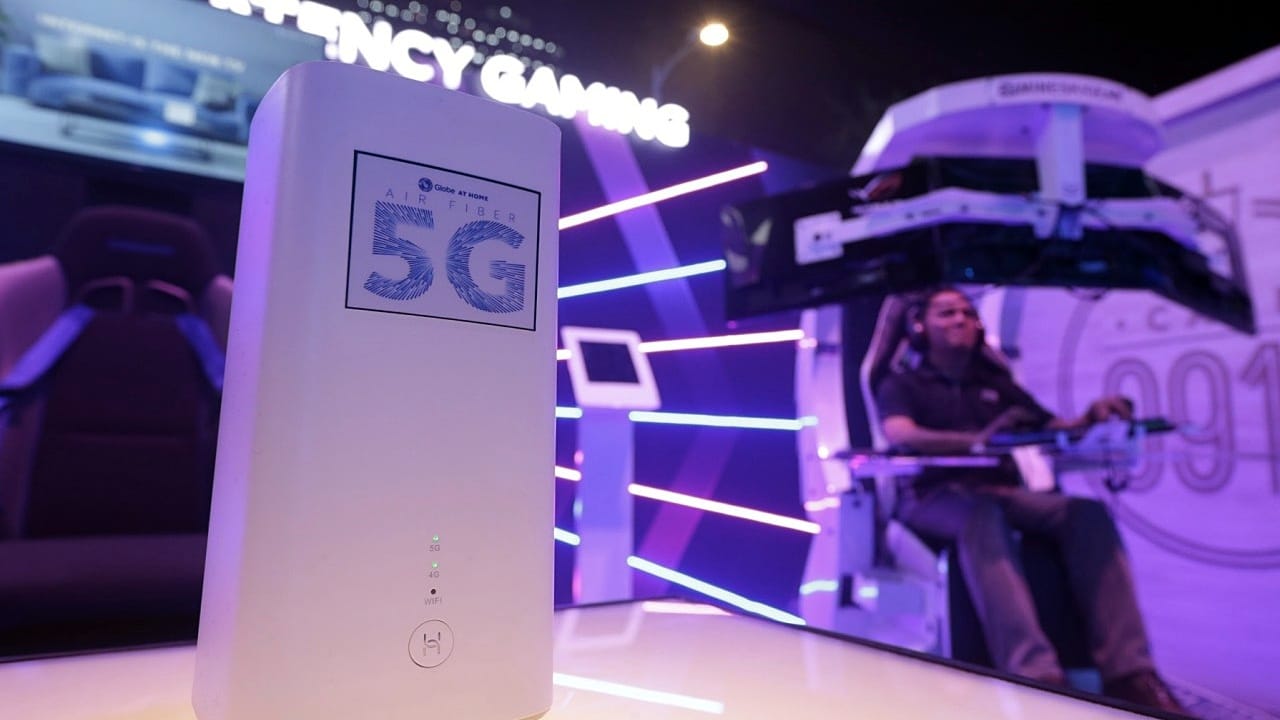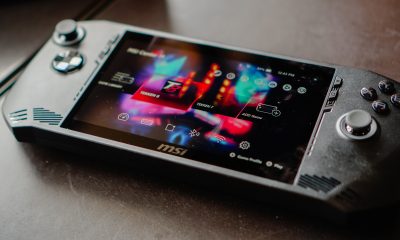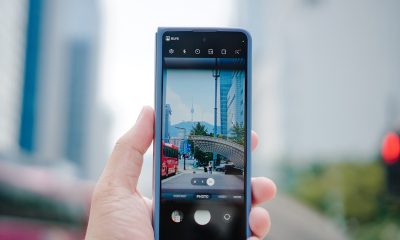Enterprise
Globe launches Southeast Asia’s first 5G service backed by Huawei
Ultra-fast internet coming to homes first

Local telcos have been telling Filipinos that the Philippines will not be left behind in the 5G race. True to their promise, Globe Telecom launched its 5G broadband service. The word 5G might be new to some because it’s just making its way to select countries. The Philippines is now the first one to have commercial 5G service in Southeast Asia.
Before we get too excited, it’s worth noting that Globe’s initial 5G service is limited for homes, and it’s not yet for mobile devices. Globe will soon offer fixed wireless broadband using 5G technology to deliver fiber-like speeds. Basically, Globe is keen to deliver high-speed internet to Filipino homes wirelessly rather than rolling out fiber optics cables. Truth be told, the process of laying out fiber optics are always met with drastic delays due to bureaucracy.
With Globe At Home Air Fiber 5G, the telco will offer postpaid plans starting July 2019 with promised speeds of up to 100Mbps and up to 2 terabytes of monthly data allowance. It’s not unlimited, but you practically have more than 60GB of data to play with every single day.
The plans start at PhP 1,899, which is at par with Globe’s current wired broadband services:
- Plan 1899 — up to 20Mbps
- Plan 2499 — up to 50Mbps
- Plan 2899 — up to 100Mbps
Initially, the service will be available in select areas of Pasig City in Metro Manila, and in the province of Cavite and Bulacan.

Despite the privacy issues and sanctions thrown by the US, Globe has pushed through their plan to use Huawei equipment, including radios and modems, to deliver 5G broadband internet. Even before, Globe is in partnership with Huawei for its 4G service alongside with Nokia.
Globe President and CEO Ernest Cu disclosed that the company has been spending over 21 percent of its annual revenue to upgrade and expand. In 2018, the company spent PhP 43.3 billion for its broadband services. Hopefully, the use of 5G will enable more homes with a faster and more reliable internet connection.
SEE ALSO: Globe, Smart downplay Huawei ban imposed by US government

For the longest time, Google kept Pixel and Android behind two different teams. While the Pixel team dealt with devices made by and for the brand, the Android team ships a product meant for brands outside of the company’s purview. However, the days of separation are at an end. Google is officially merging its Pixel and Android teams together.
In a shocking announcement, the company has confirmed that the teams handling hardware and software will fall under a single team headed by Rick Osterloh. Prior to the merge, Osterloh was the senior vice president of devices and service, which was Google’s hardware branch. He will now oversee both hardware and software.
Because of the new leadership change, Hiroshi Lockheimer, former head of Android, will now move on to other projects within Alphabet. Of note, the change is not harsh for Lockheimer. He and Osterloh had been contemplating on the merge for a while.
Now, why the change? As is the case with everything today, it’s all because of AI. Speaking to The Verge, Osterloh explains that the merge will help with “full-stack innovation.” With how technology is these days, it’s now impossible to develop AI without having a close eye on hardware, such as in Google’s AI developments for the Pixel camera. Merging the teams will help streamline development, especially when hardware is involved.
Despite the change, outside brands, like Qualcomm’s Cristiano Amon, remains confident of Android’s capabilities outside of Google. Just expect more AI coming out in the near future.

The ongoing trade war between the United States and China is putting a lot of companies out of business in one country. While all eyes are currently on America’s crusade against TikTok, China has launched a salvo of its own. The country has started banning AMD and Intel, starting with government devices.
Recently, as reported by the Financial Times, China has introduced a new rule that bans American chipsets and servers from government agencies. The new ban includes AMD, Intel, and Microsoft Windows.
In lieu of the now-banned brands, Chinese government agencies must use approved brands from a list of 18 Chinese manufacturers. Unsurprisingly, the list includes Huawei, another brand involved in the ongoing trade war. (Huawei is still banned on American soil.)
As with bans from America, China’s latest rules stem from a desire to implement national security. Both countries allege that using brands from the opposing side will open a potential avenue for transferring classified information.
Currently, the ban against the American chipsets are only affecting government devices. However, if it follows the same trajectory as Huawei and TikTok in the United States, a government-only ban might soon lead to an all-out ban on consumer devices. As TikTok is currently hanging in the balance, it’s unlikely that the trade wars will cool down anytime soon.

So far, Apple’s greatest enemy has been the European Union. Months and months of claiming that the company engages in anti-competitive practices, the region has successfully caused Apple to drastically change a lot of things about the iPhone including the Lightning cable. Now, a new challenger wants Apple to answer for its supposed grip on the industry: the United States government.
Today, the Department of Justice is officially suing Apple for supposedly monopolizing the smartphone industry and stifling competition. The lawsuit alleges that Apple’s lineup of products prevent users from trying out other brands. For example, Apple limits how well a third-party smartwatch works on an iPhone, pushing users to go for an Apple Watch instead.
The lawsuit also includes an important pain point in Apple’s fight in Europe. It says that the company makes it difficult for iPhone users to communicate with Android users (and vice versa). Late last year, the company already committed to supporting RCS as a messaging standard, finally easing communication between the two systems. Their adoption has yet to arrive, though.
Though not as stringent as Europe, the American government is no slouch when it comes to questioning its own companies for pursuing anti-competitive practices. In the past, it went through Google and Spotify to protect the interests of its citizens. The lawsuit against Apple is no different, gathering signatures from sixteen states.
For Apple’s part, the company aims to get the case dismissed, alleging the lawsuit’s unfair scope of just the American people when it targets the entire world.
SEE ALSO: Apple opens first Developer Center in Southeast Asia
-

 Features2 weeks ago
Features2 weeks agoFortify your home office or business setup with these devices
-

 Reviews1 week ago
Reviews1 week agorealme 12+ 5G review: One month later
-

 Gaming1 week ago
Gaming1 week agoNew PUMA collection lets you wear PlayStation’s iconic symbols
-

 Accessories1 week ago
Accessories1 week agoMarshall Major V: Reasons Why I Love It
-

 Gaming2 weeks ago
Gaming2 weeks agoMore PlayStation 5 Pro specs have been leaked
-

 Features1 week ago
Features1 week agoWhy choose the MSI Claw?
-

 Gaming2 weeks ago
Gaming2 weeks agoUbisoft is taking away copies of The Crew from your library
-

 Gaming2 weeks ago
Gaming2 weeks agoOne Piece Odyssey coming to Nintendo Switch




























